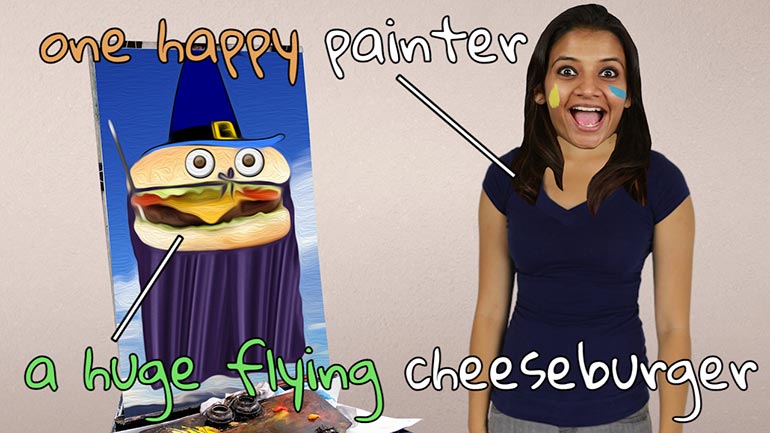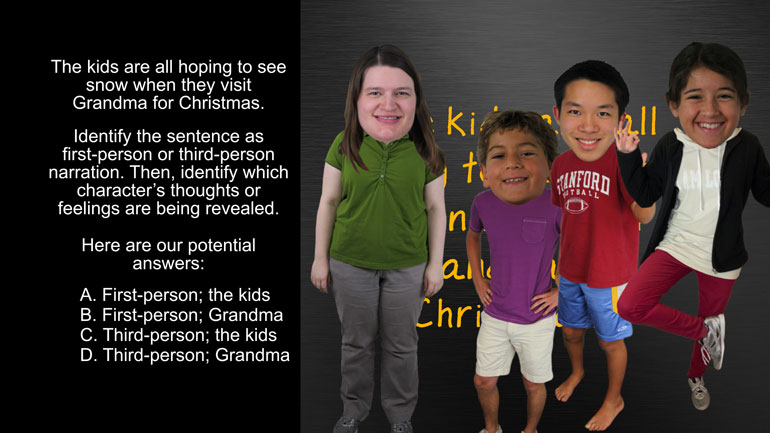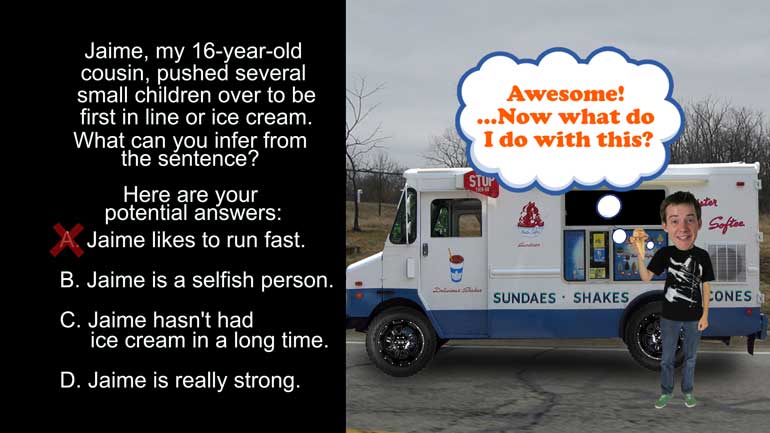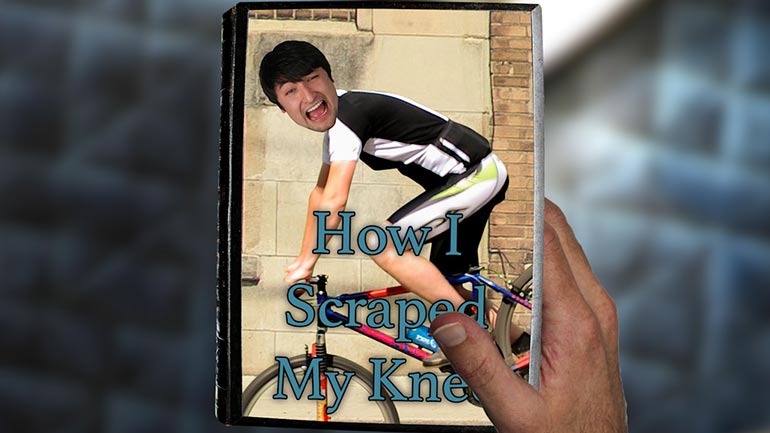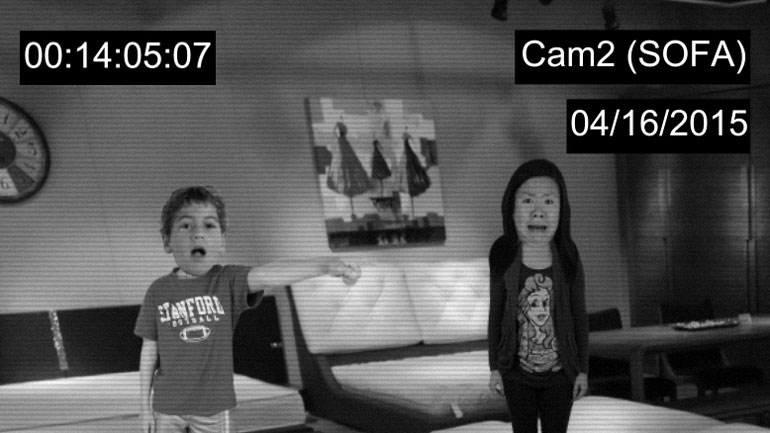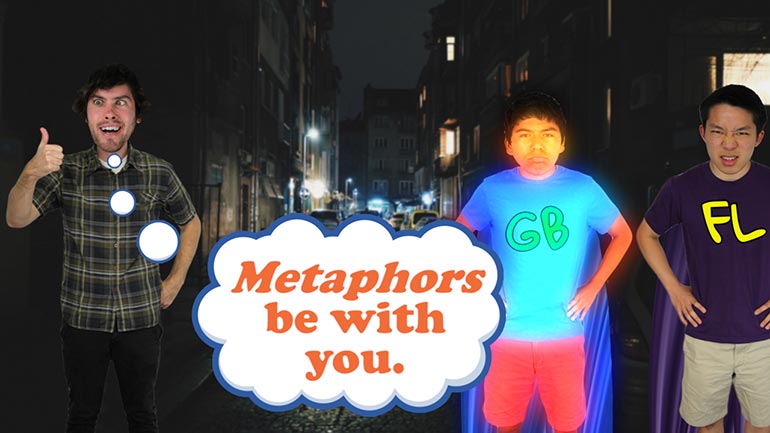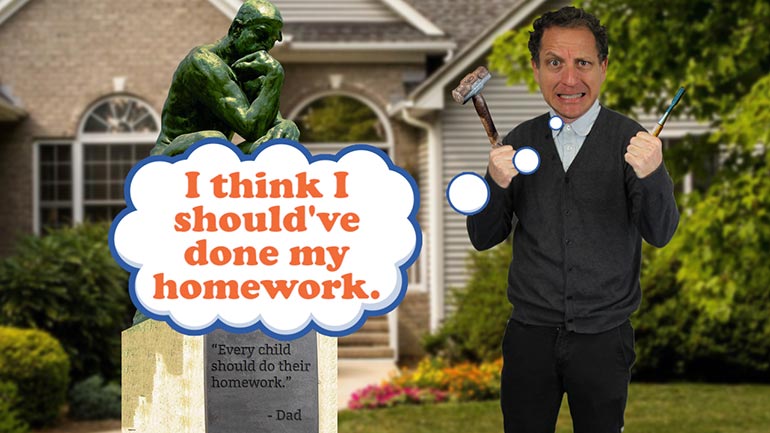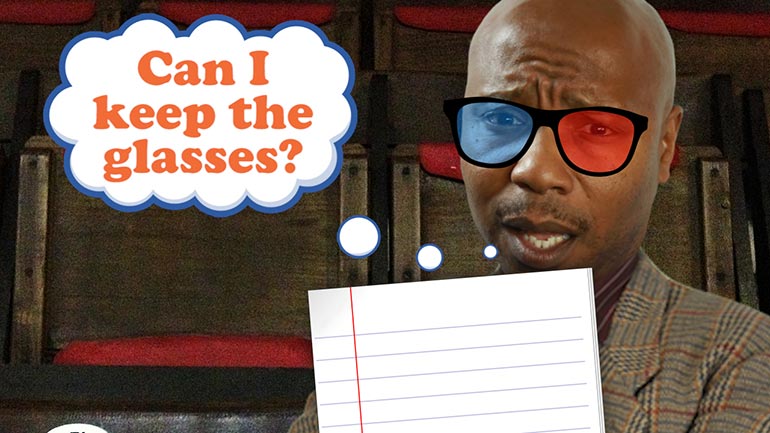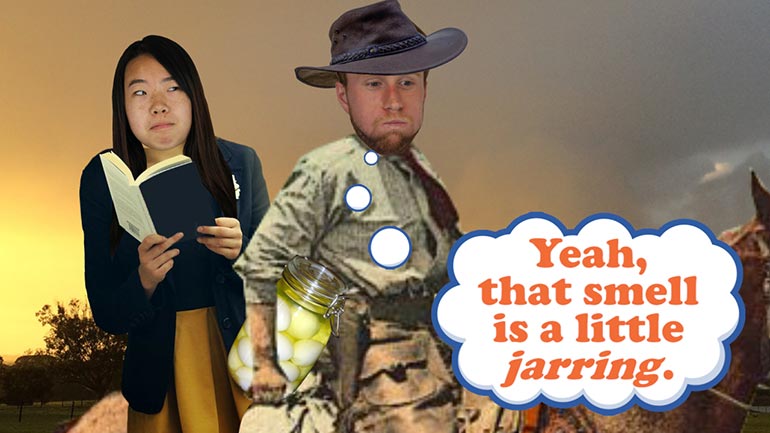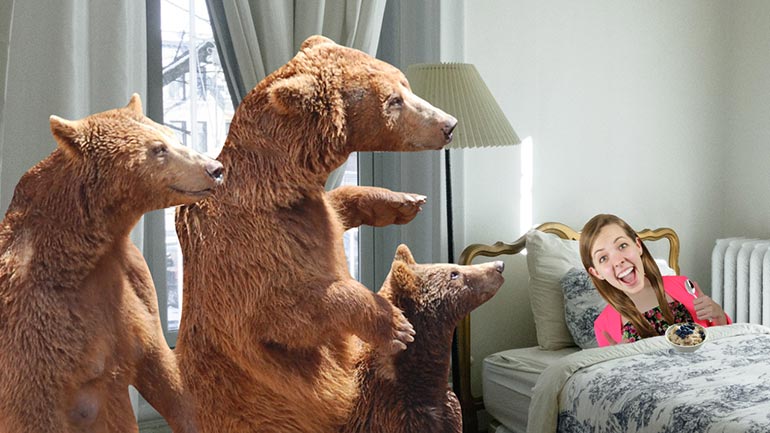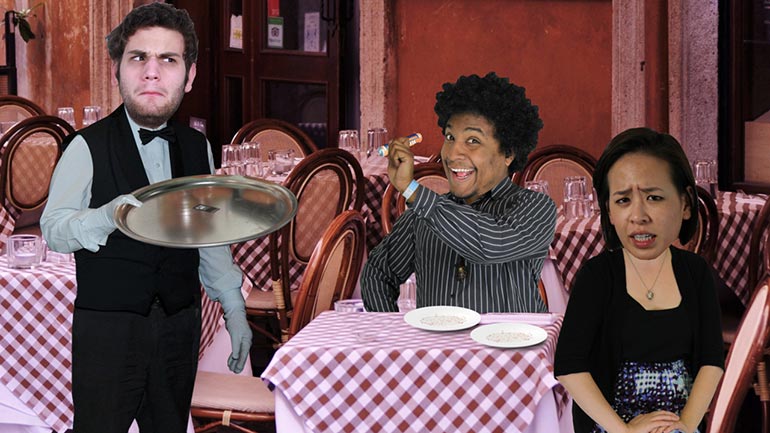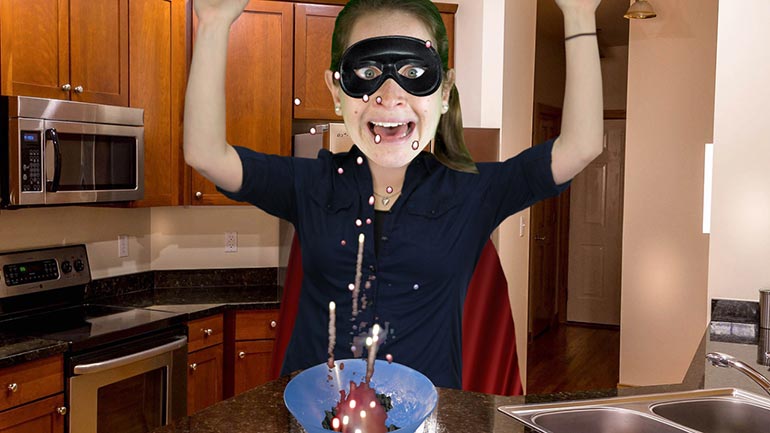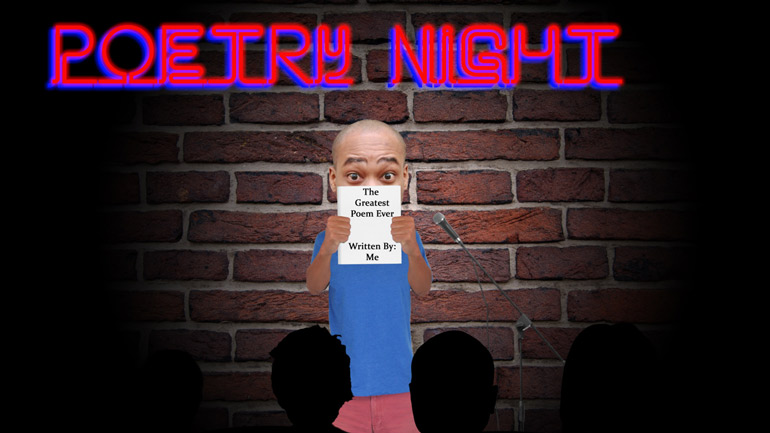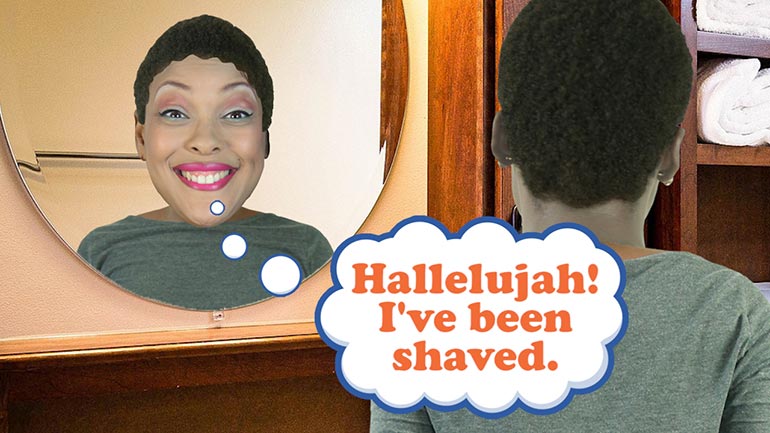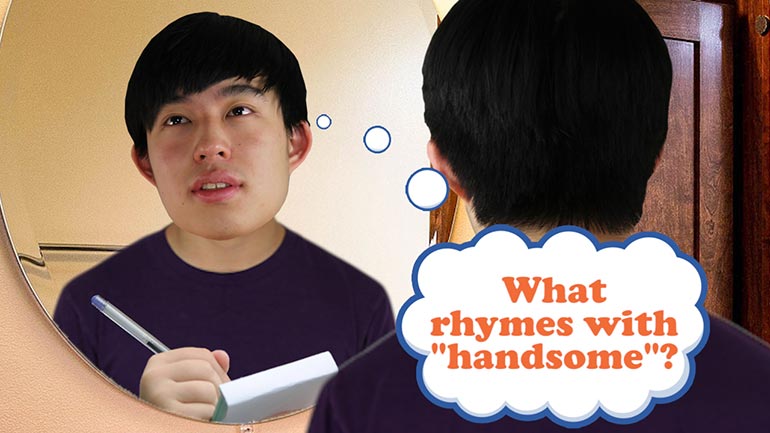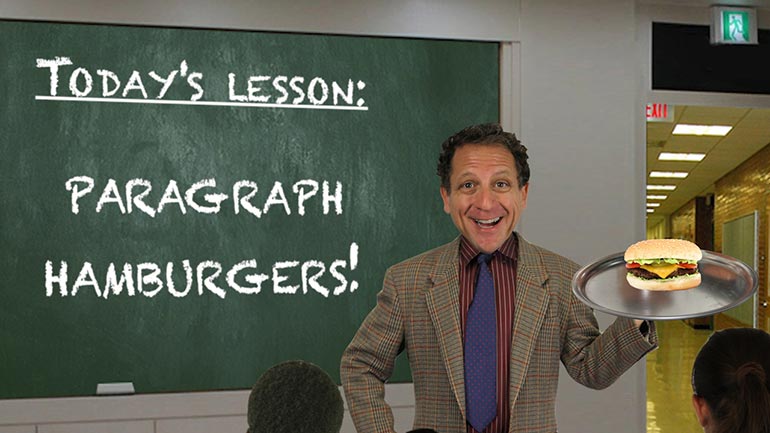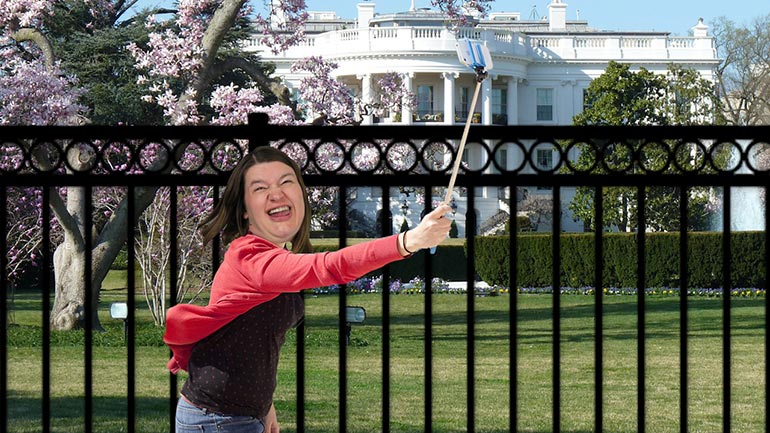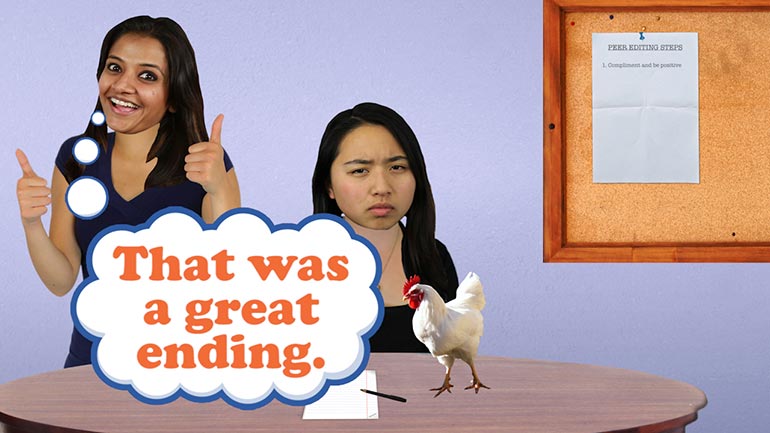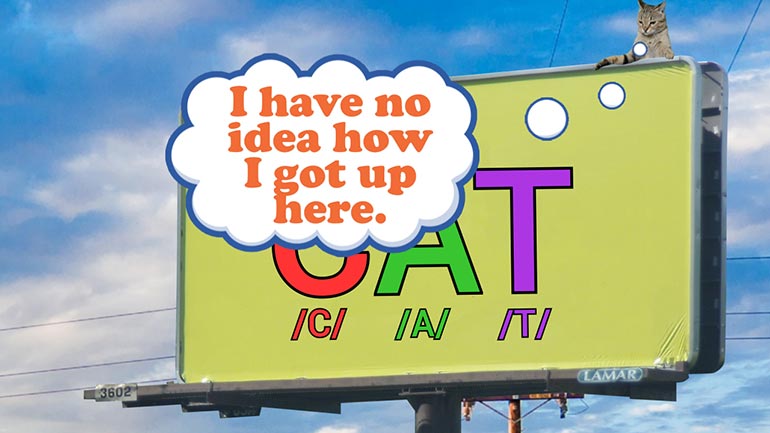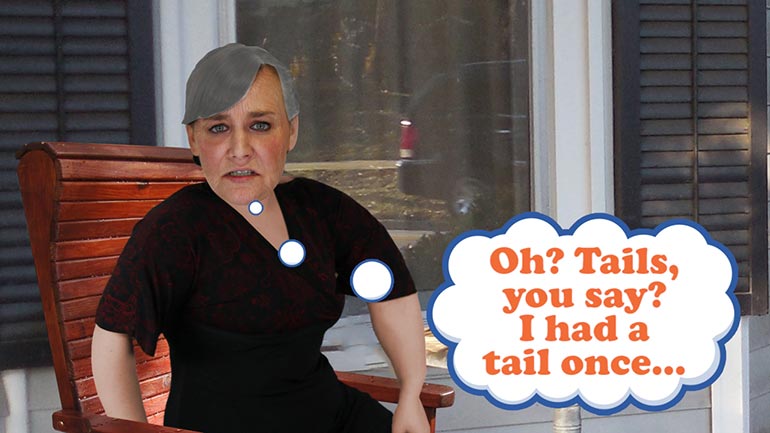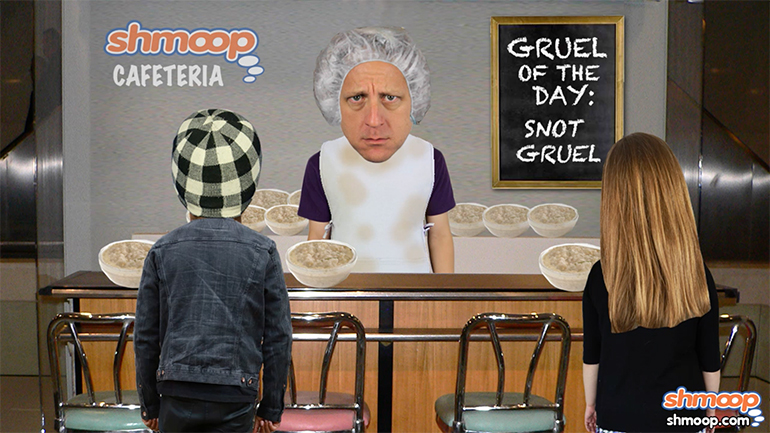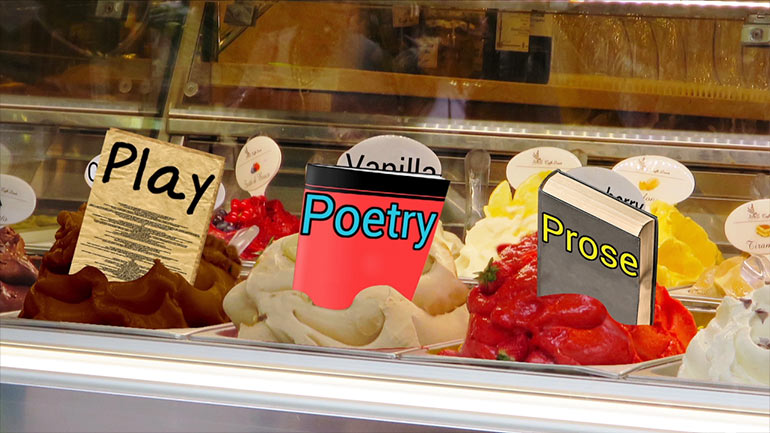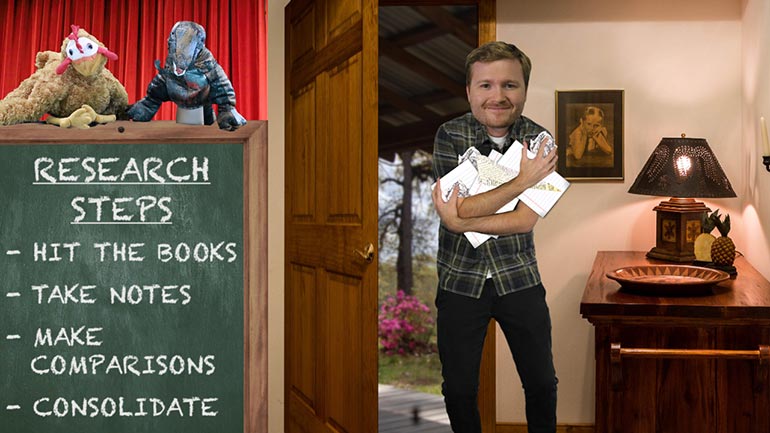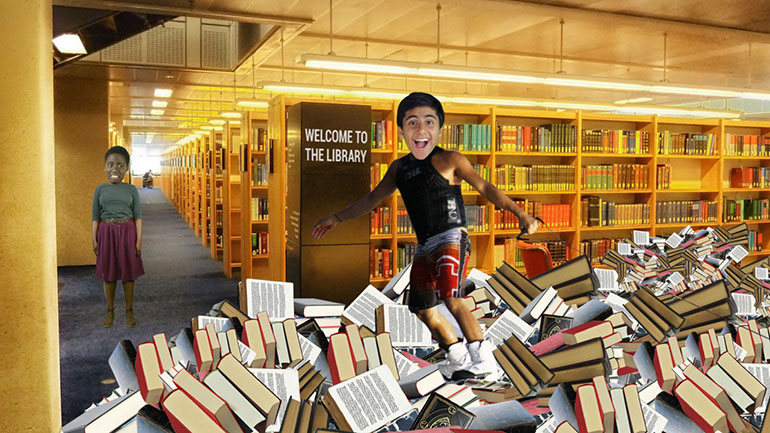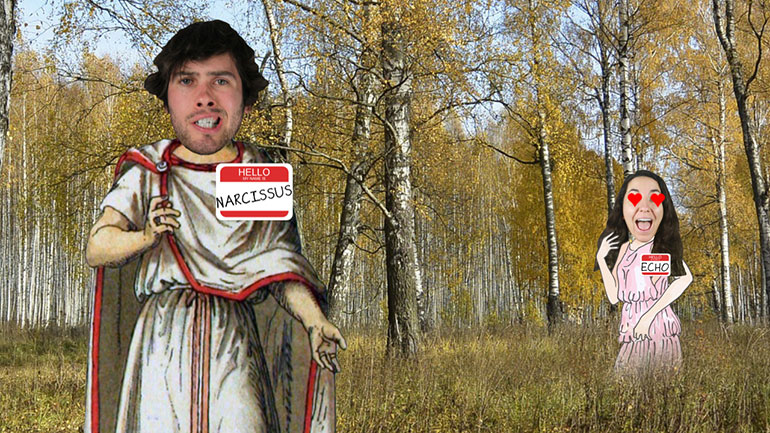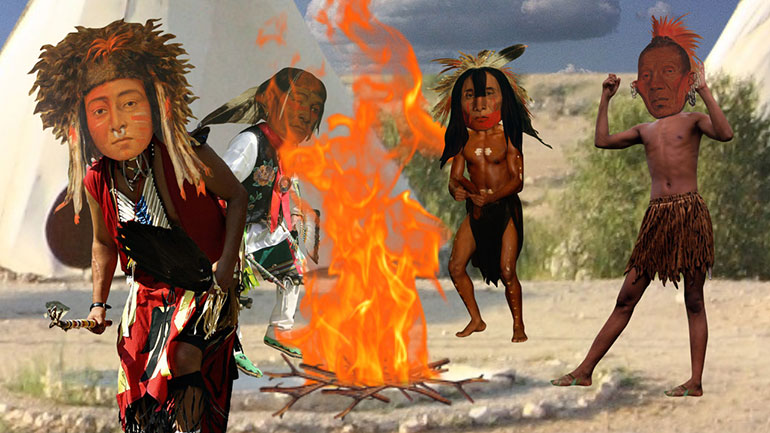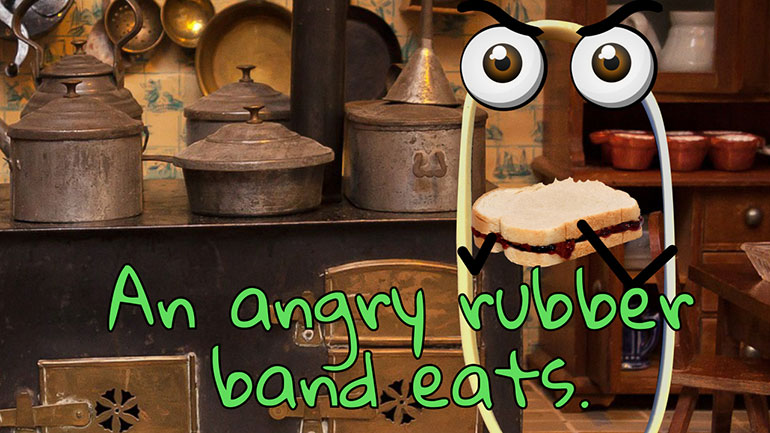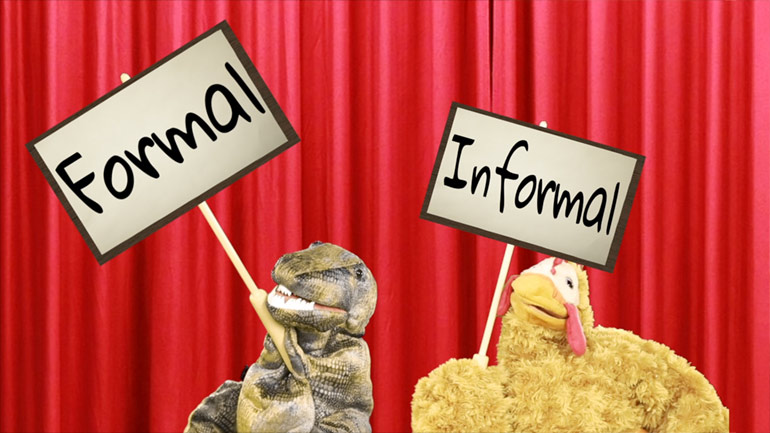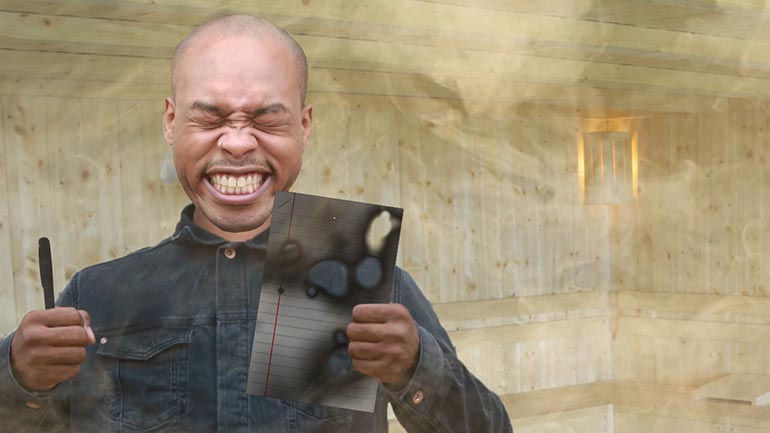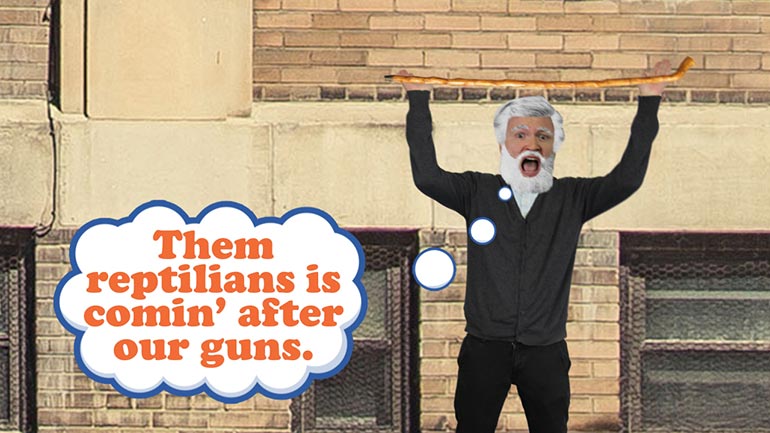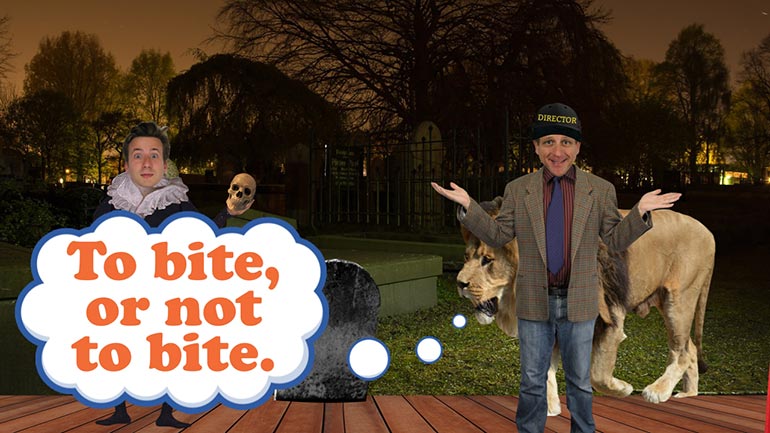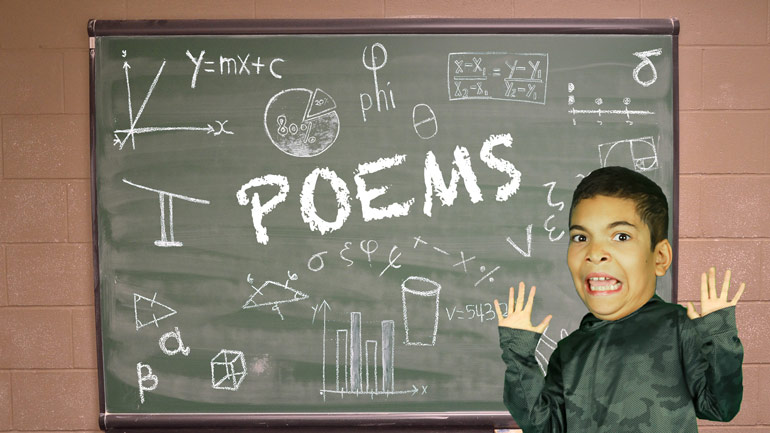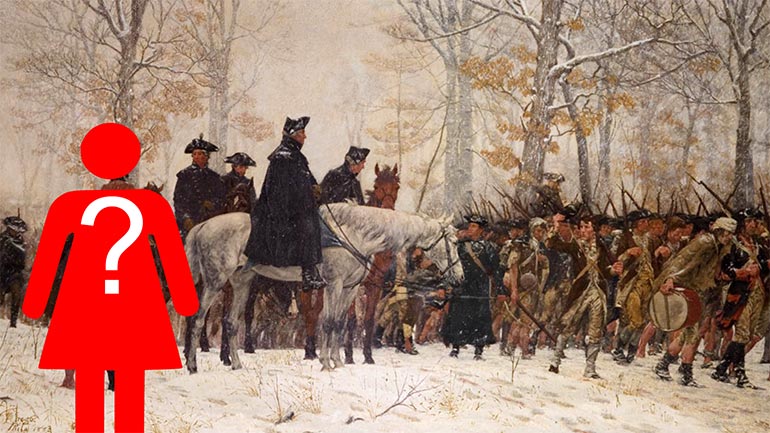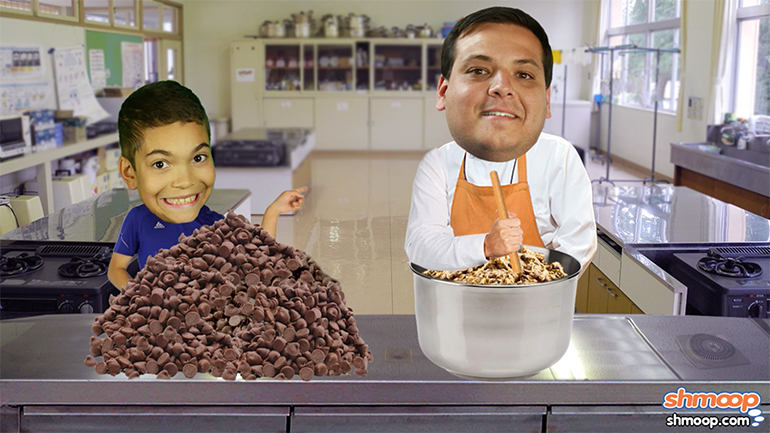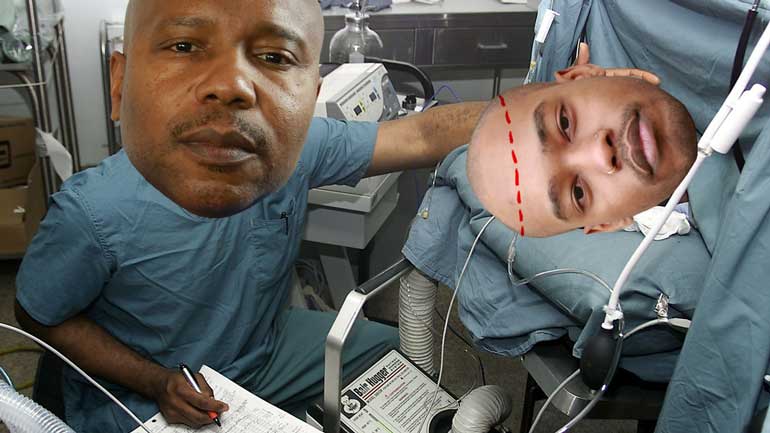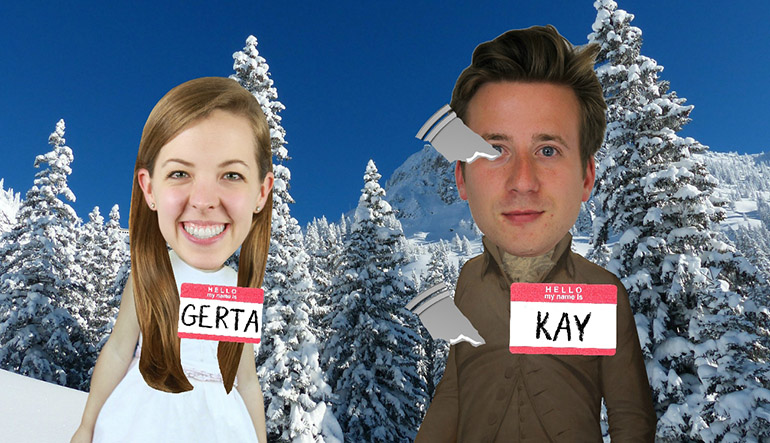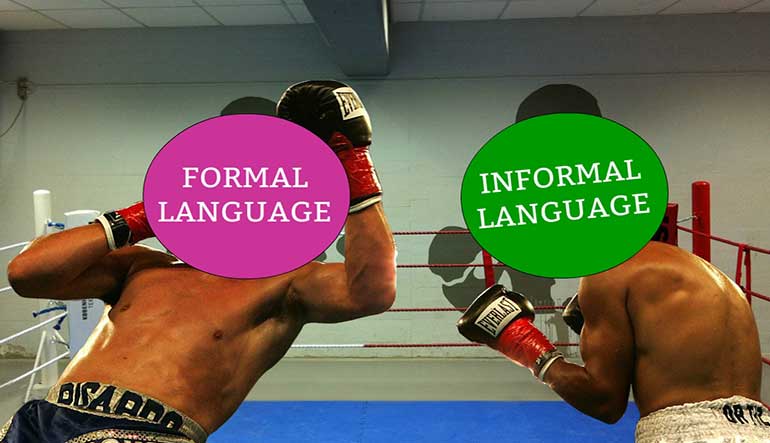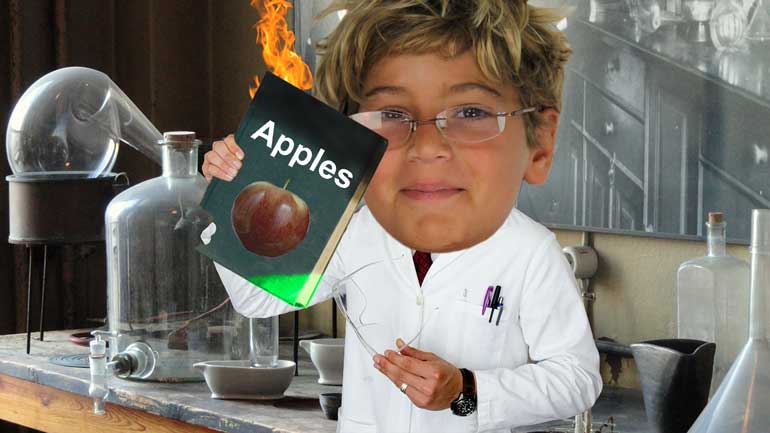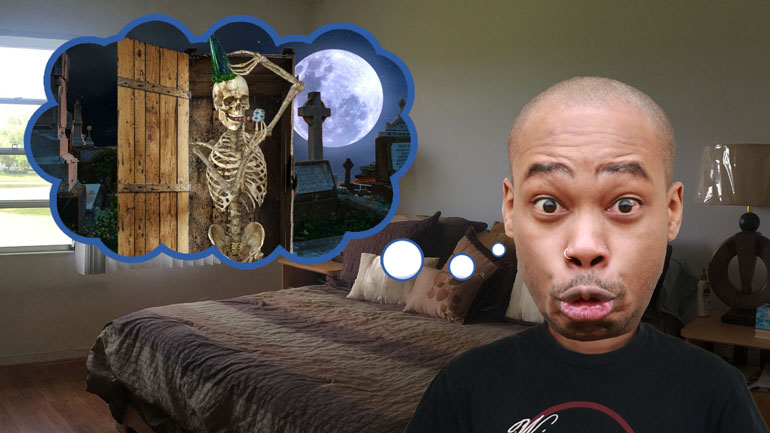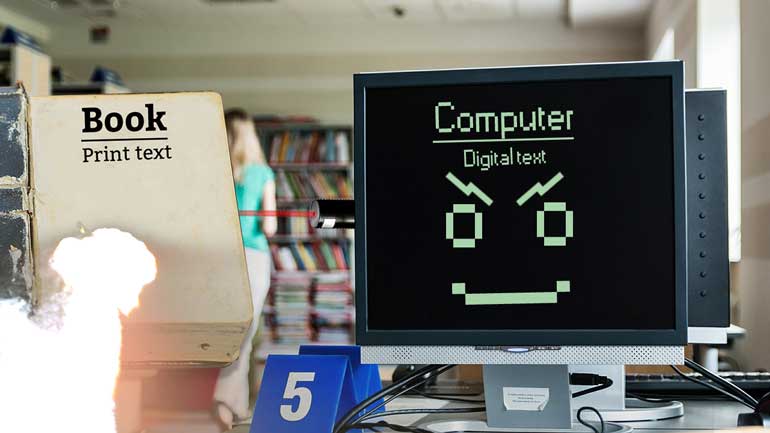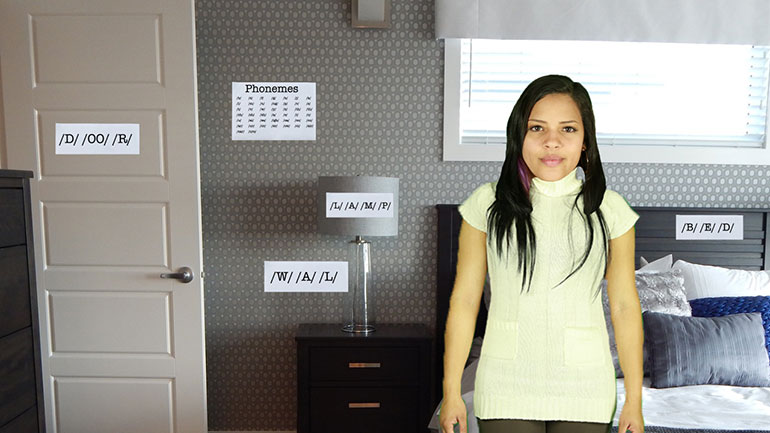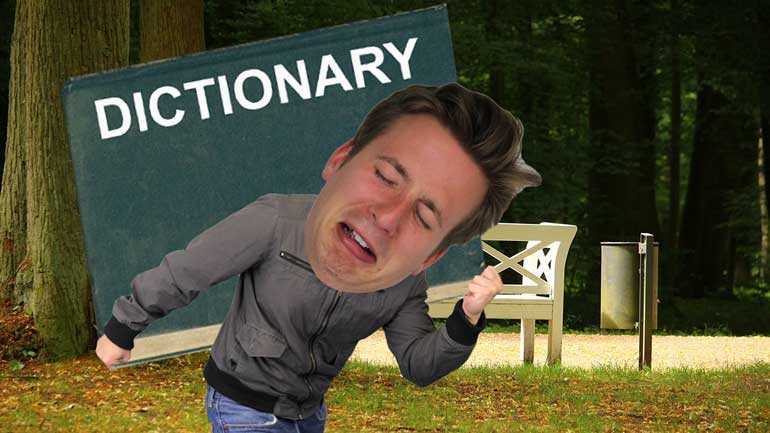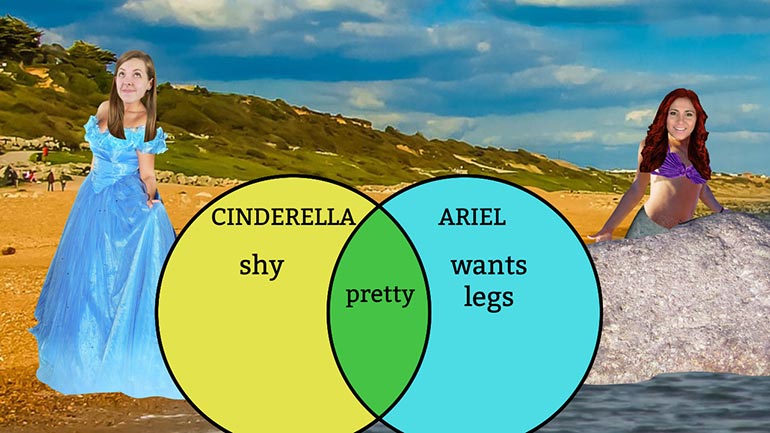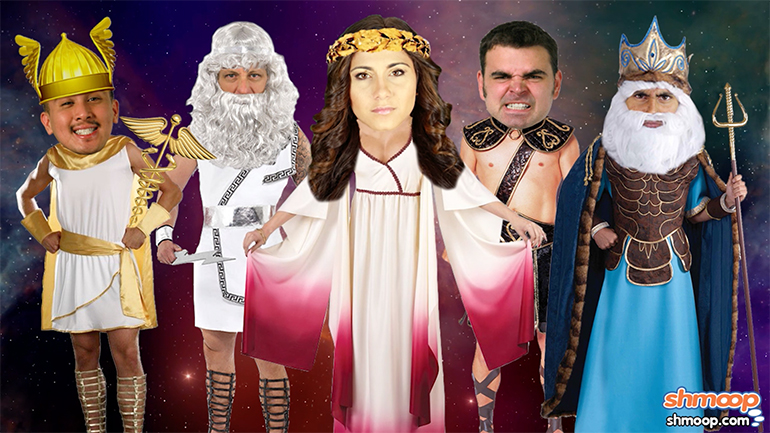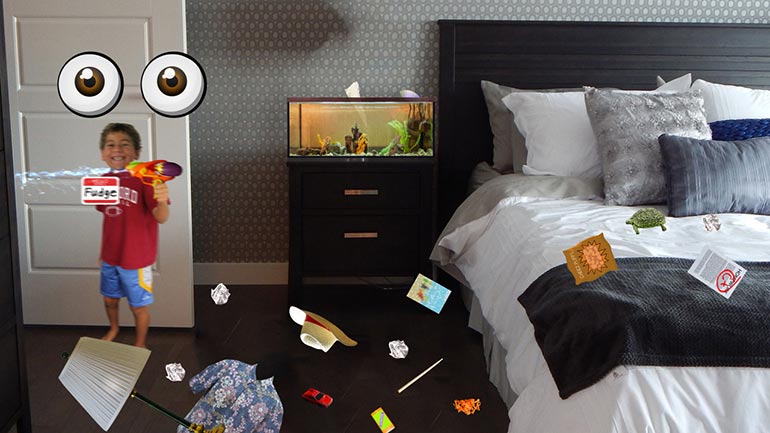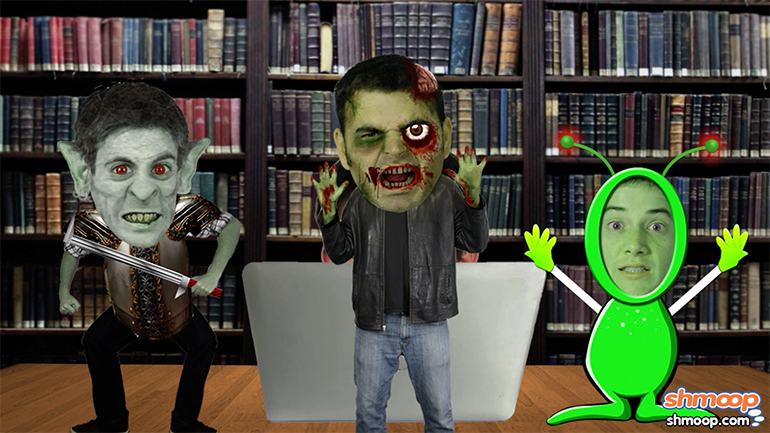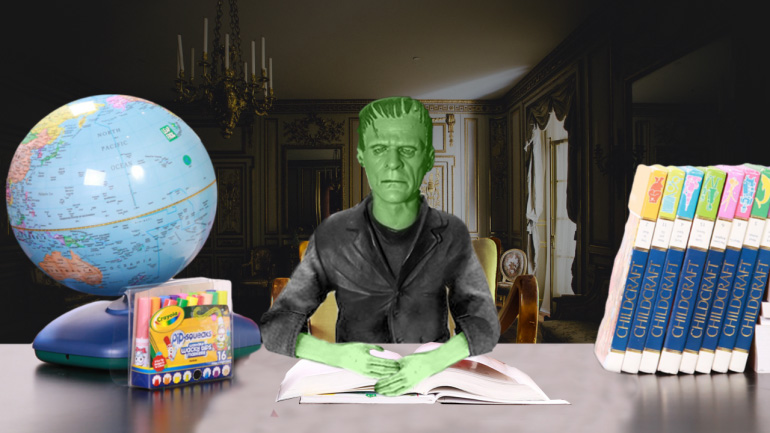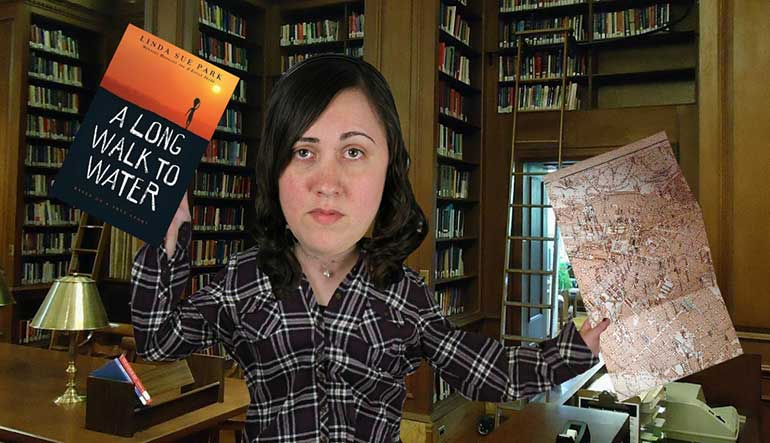ShmoopTube
Where Monty Python meets your 10th grade teacher.
Search Thousands of Shmoop Videos
Language Arts Videos 92 videos
In this lesson we'll subject you to some verbs and predicates. Each one is a necessary part of a complete breakfas—er...sentence.
Choosing words carefully is important. You may end up vexing the assemblage of citizens you're conversing with...or you might even just plain bore...
ELA 4: What Playwrights Do: The Writing 32 Views
Share It!
Description:
Playwrights write plays. Big shocker, right? Well they also have to format the plays. That means proper dialogue, stage direction, and pretty much anything that prevents the actors from silently standing there staring at the audience...unless that's what they're going for. But we're pretty sure that'd get pretty creepy, pretty fast.
Transcript
- 00:04
[Coop and Dino singing]
- 00:13
Believe it or not, writing a play isn't all sunshine and rainbows... [People watching play and sign of sunshine and rainbows appears]
- 00:16
Well, unless your play is called “Sunshine and Rainbows,” in which case… we stand
- 00:20
corrected.
- 00:21
But our point is that writing a play can be hard work.
Full Transcript
- 00:23
Why? We're glad you asked!
- 00:24
First things first, the playwright shouldn't even think about starting the writing process [Coop discussing the writing process]
- 00:28
without completing the planning process first.
- 00:30
By planning out the play beforehand, the writer will already know the characters, settings,
- 00:34
conflict and plot points of their play… all before they write a single word.
- 00:38
Sounds pretty nice, huh?
- 00:39
It’s like lining up at the finish line before the race even starts. [Guys stood at a tracks finish line]
- 00:42
Once that's done, all that’s left is to put all that good pre-planned stuff into the
- 00:46
proper play format.
- 00:47
And what do we mean by play format?
- 00:48
We're talking about the text features, of course. [Coop discussing the text features]
- 00:51
And if you've forgotten what features make a play a play, never fear!
- 00:53
Shmoop is here, with a handy-dandy checklist.
- 00:56
First is the Cast of Characters. [Page of cast of characters]
- 00:57
This comes at the beginning of the play and is used to explain who is in the play and
- 01:01
what they're like.
- 01:02
It's important for the actors to learn who they are and how they should act.
- 01:05
We suggest messing with one of your actors and saying, "this character secretly thinks [Girl discussing character with other actress]
- 01:09
they're a potato."
- 01:10
See how they act that one.
- 01:11
Second are the setting descriptions.
- 01:13
These descriptions tell us where each scene takes place and how it’s supposed to look.
- 01:16
It also gives the director and the set designer clues to what the stage should look like. [Example of set descriptions]
- 01:20
Hopefully it’s more “beach” and less “post-apocalyptic space rodeo,” but no [Actresses on set in post-apocalyptic setting]
- 01:24
matter what it is, they have to make it happen.
- 01:26
Third and probably most importantly comes the dialogue, which is really the bread and
- 01:30
butter of any play.
- 01:31
After all, a play is all about actors speaking lines to one another, and how the heck are
- 01:35
they supposed to do that if you don't write them any lines? [Mime artist performing on stage]
- 01:37
It’s a play, not an onstage mime convention.
- 01:40
And last but not least comes the stage directions.
- 01:42
If you want an actor to run across the stage or jump for joy or fall over in a fit of laughter,
- 01:47
well, you better write it down!
- 01:48
Stage directions tell the actors how they should move onstage, and unless you want everyone [Girl in a banana costume and guy dressed as a chicken]
- 01:52
standing completely still the entire time, you should probably include 'em..
- 01:55
And that's your basic checklist!
- 01:57
Once you've planned out your play, be sure you have a good grasp on these four text features,
- 02:01
and how they work.
- 02:02
Otherwise your play might end up looking like a mime convention, which...might be cool at first? [Mime artist on the street]
- 02:06
But would probably get old after two hours of a guy pretending to be in a box… [Mime artists on stage pretending to be in a box]
Related Videos
Sticks and stones, right? Well...only sometimes. It's a good idea to make sure your words aren't going to hurt others. Let's look at some ways to d...
Learn to debate like a champ. It's way better than debating like a chimp. That just takes mudslinging to a whole new level.
Today we'll learn about biographies and autobiographies. And no, the second one has nothing to do with the lives of cars.
In this lesson we'll subject you to some verbs and predicates. Each one is a necessary part of a complete breakfas—er...sentence.
Choosing words carefully is important. You may end up vexing the assemblage of citizens you're conversing with...or you might even just plain bore...



